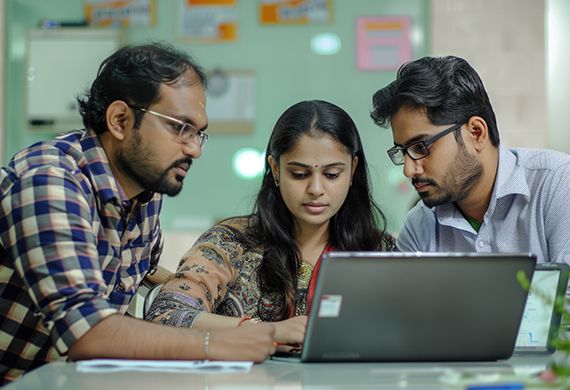
In 2024, 50% of Startups in India Had At least One Woman Director
By: WE staff | Friday, 2 May 2025
- Based on data from Women and Men in India: 2024 by the Ministry of Statistics and Programme Implementation
- Focused on financial inclusion as a pathway to women's economic independence and reduced gender gaps
- Examined the number of women with bank accounts across Indian states
In part two of our series on the Ministry of Statistics and Programme Implementation's ‘Women and Men in India: 2024’ report, we move from talk of financial inclusion to a most critical space in gender equality: women's presence in decision-making. Such involvement is crucial, not just to empower women but also to robustify democratic mechanisms and enhance policy and business outlook.
As of December 2024, almost half of all DPIIT-acknowledged startups had a least one woman director, compared with slightly more than a third back in 2017. That increase is noteworthy, as the number of these startups has gone up nearly nine times in just seven years—to over 17,000 from less than 2,000.
Maharashtra takes the lead in terms of women-led startups, then Uttar Pradesh and Karnataka. What is also noteworthy is that 20 out of 36 States and Union Territories now have over half their startups with one woman director or more, which is a hopeful trend towards women's entrepreneurial leadership. But when it comes to corporate leadership, there has been slower progress. From 2017 to 2025, the women on company boards went up from 4.5 lakh to 9.1 lakh, but their proportion increased only slightly—from 26 percent to 29 percent.
There is a similar trend for senior and middle management positions. Even as the count of women at top management levels rose from 23,685 to 38,745, representation is still meager at 17 percent as of 2025. The participation of women in other management positions has also risen from 26 percent to 29 percent. Though the general gender split is getting better, senior management level positions continue to have the greatest gender divide and thus there must be increased inclusivity at leadership levels.
Even in defence and policing, once male bastions, the proportion of women keeps rising, albeit gradually. Women comprised close to 10 percent of the overall police force as of January 2023, with the highest proportion in the Civil Police at 15 percent. Leaving out the Central Armed Police Forces (CAPF), the proportion of women in state-level police forces has come close to doubling since 2014, to 12.3 percent.
In the military, the Indian Air Force is the gender-balanced spearhead with women occupying 13.4 percent of its strength in 2024. The Indian Army and Navy exhibited marginal increases, but the Indian Coast Guard declined. Defence research establishments such as DRDO, although possessing the highest proportion of women, reflect erratic trends.
Representation in India's central civil services also captures a slow but encouraging shift. In the Indian Administrative Service (IAS), females made up a record 41 percent of new officers in 2023. The Indian Economic Service (IES) and Indian Statistical Service (ISS) have also witnessed consistent improvements in female representation, although the Subordinate Statistical Service is still predominantly male, with just 14.5 percent of its officer’s women in 2024.
In general, although good progress has been recorded in getting women into leadership and positions of influence, particularly in start-ups and certain government services, much needs to be done to attain real gender parity—especially in corporate boardrooms, top management, and defense services.


.jpg)



